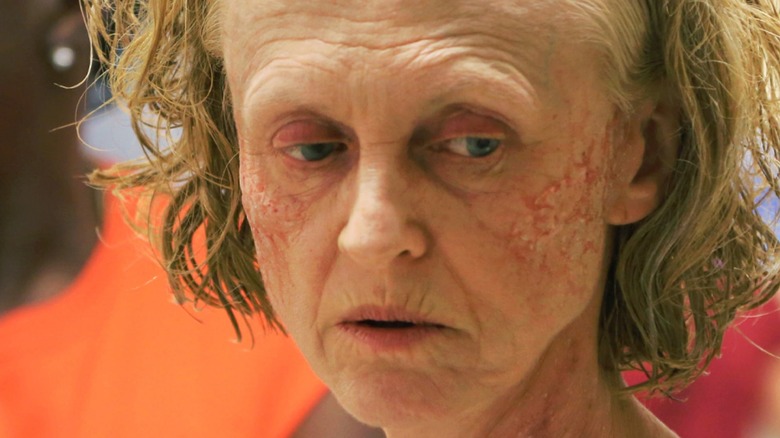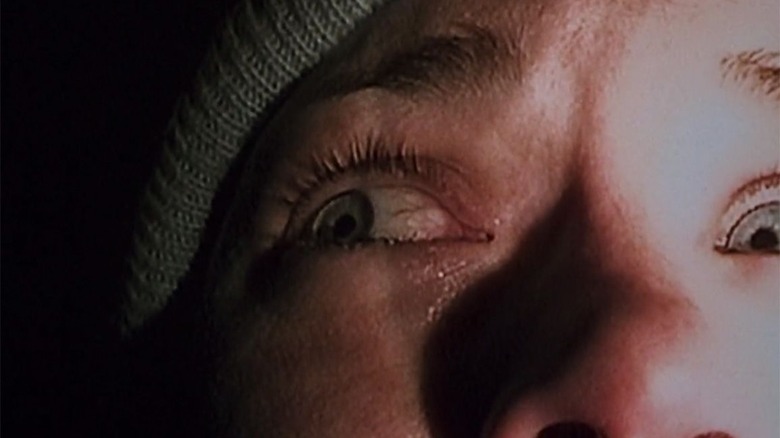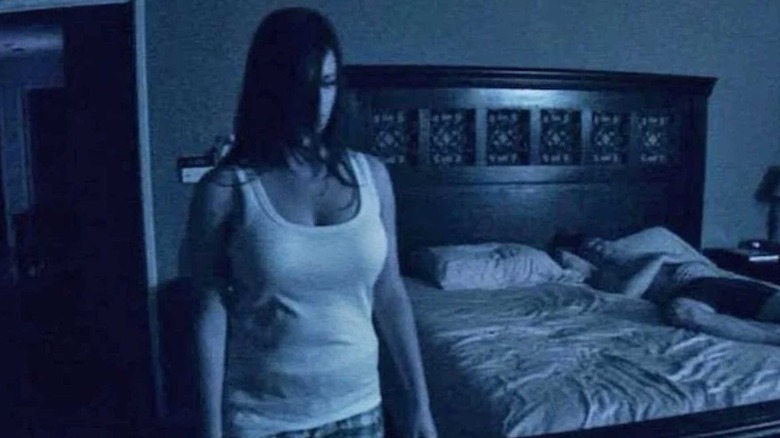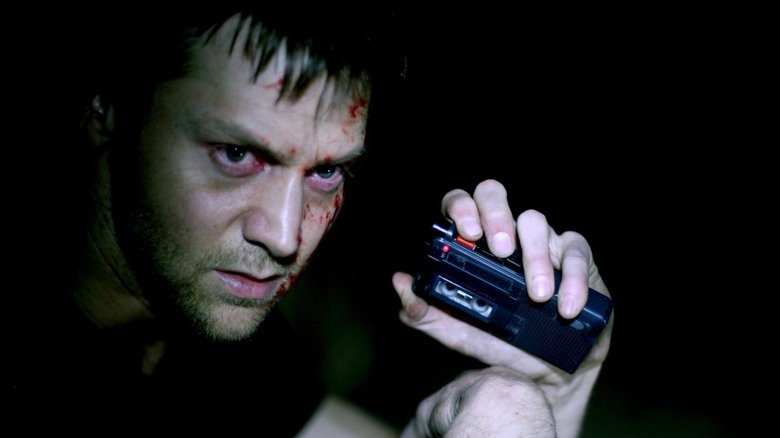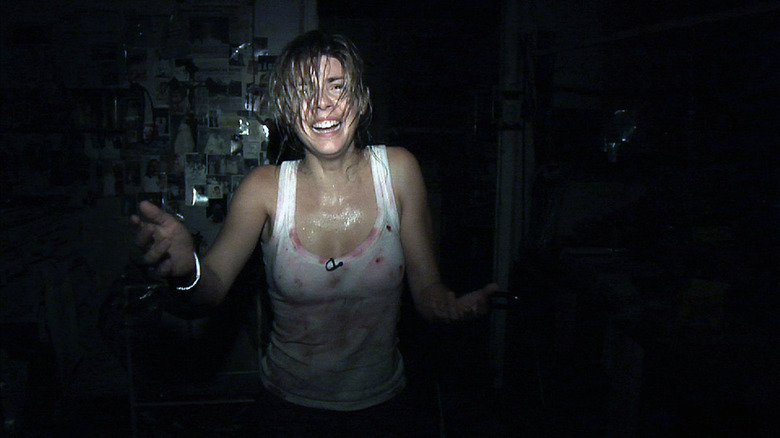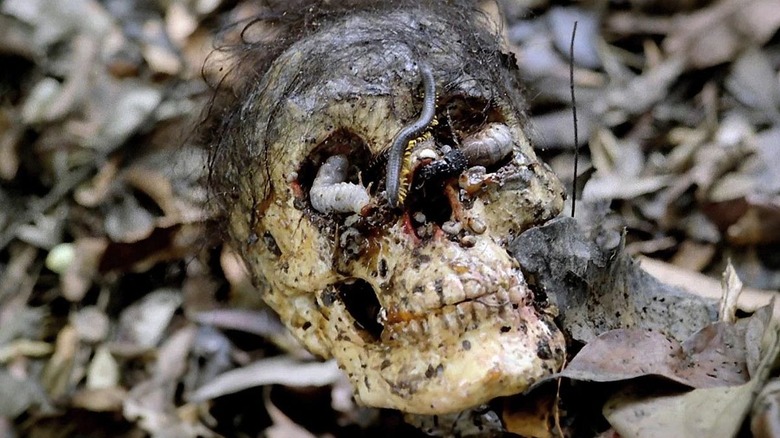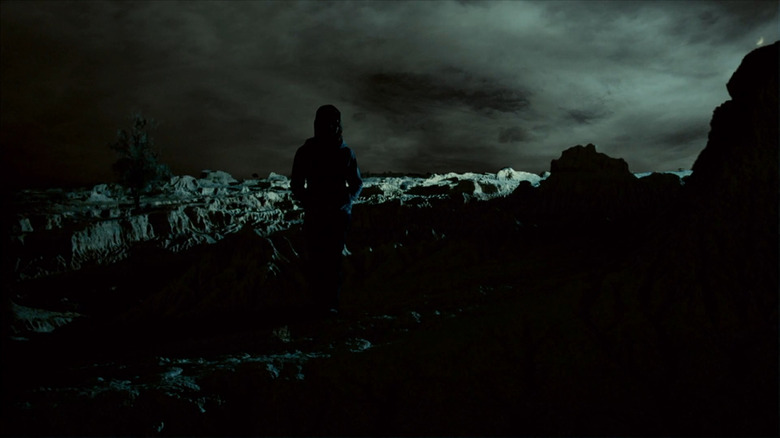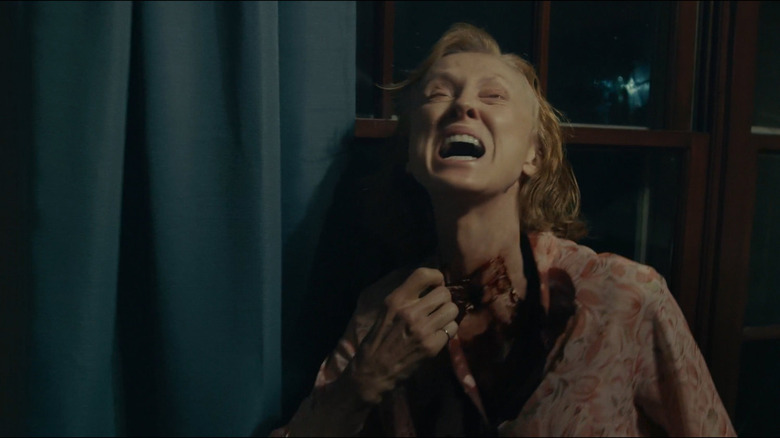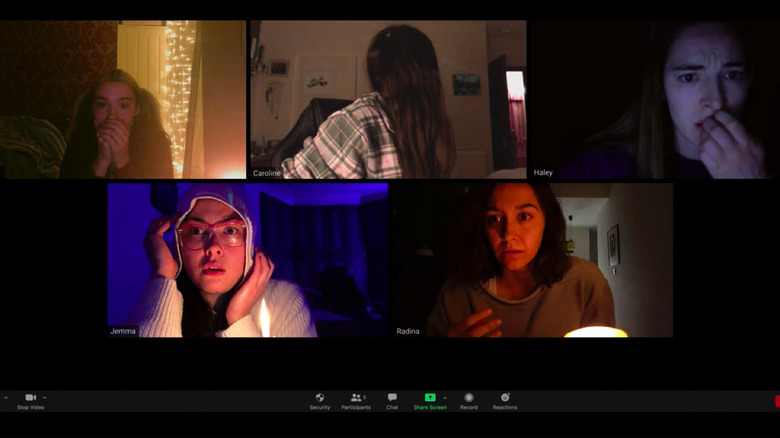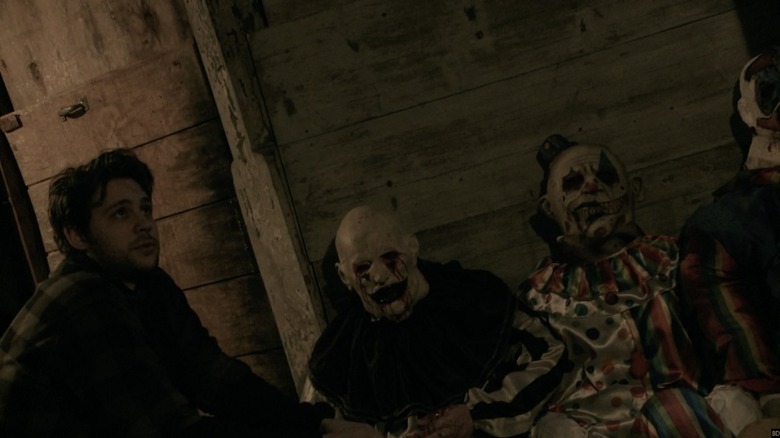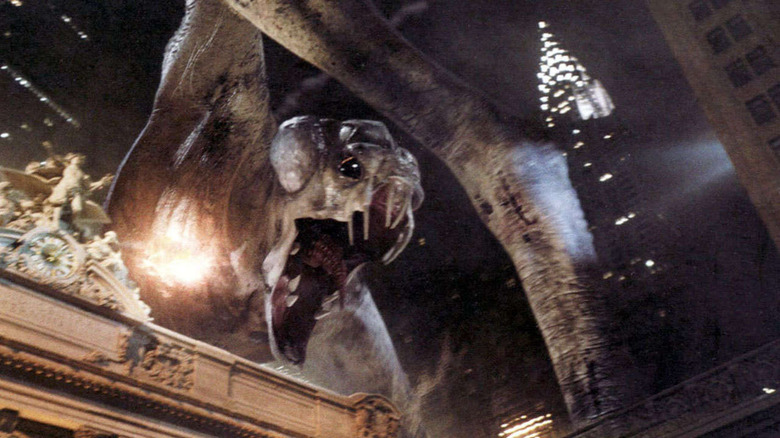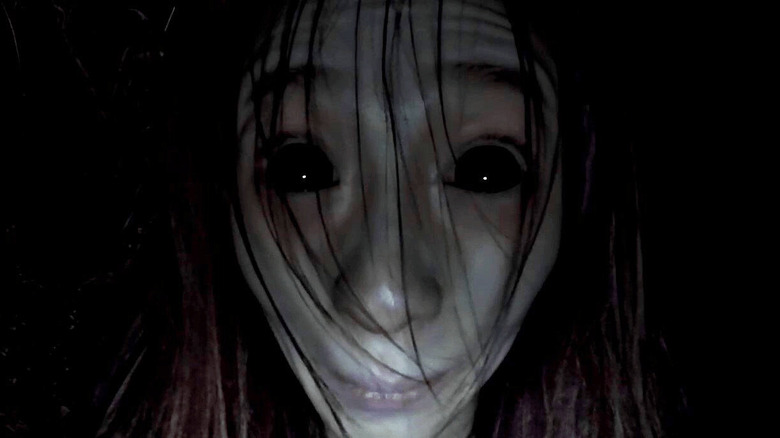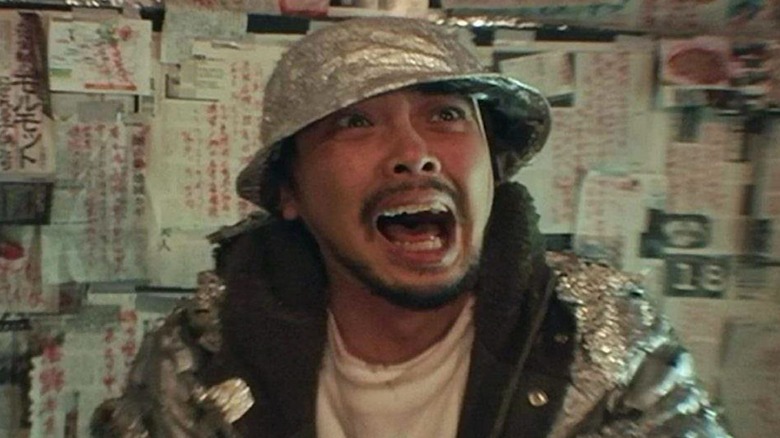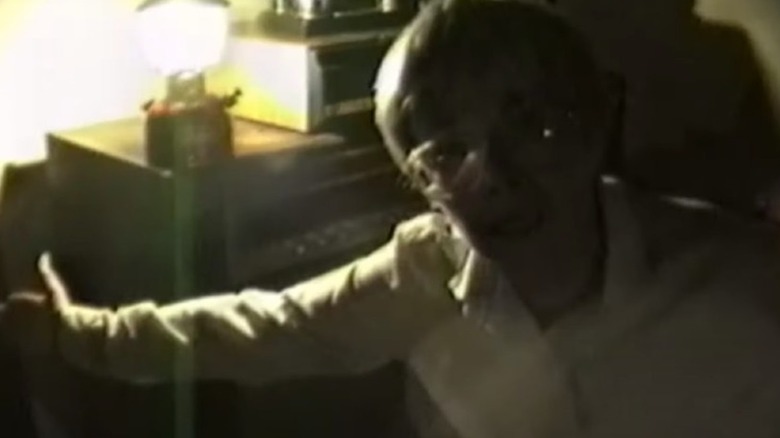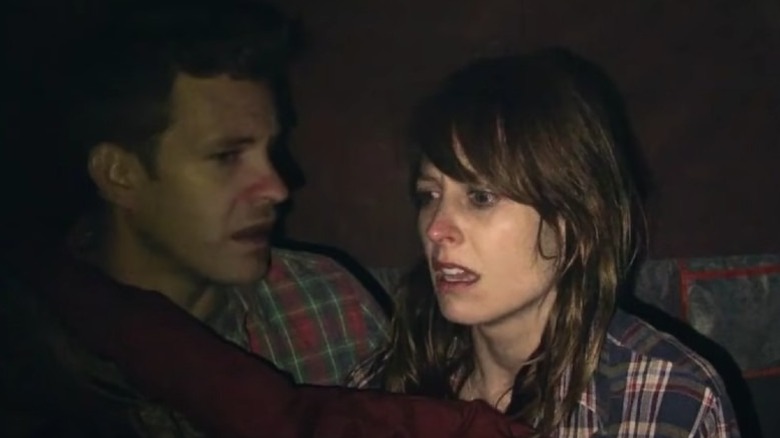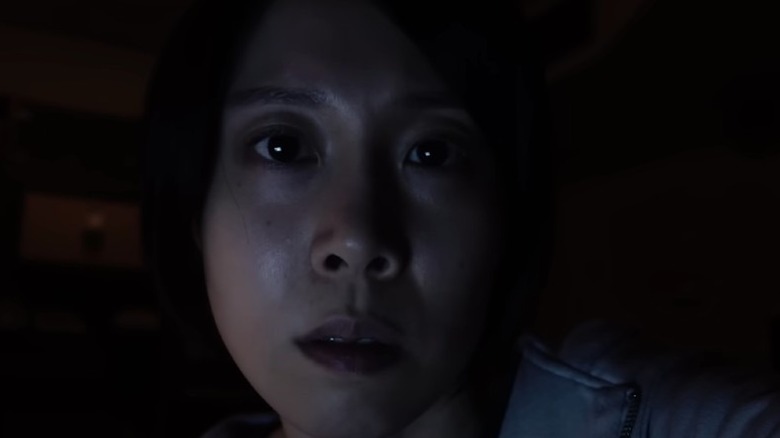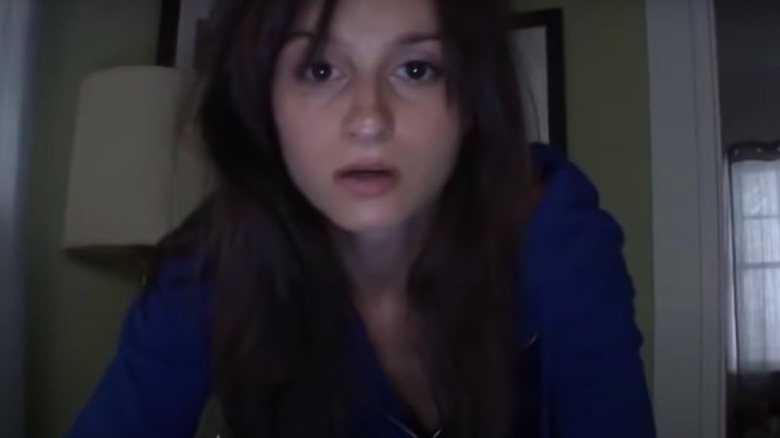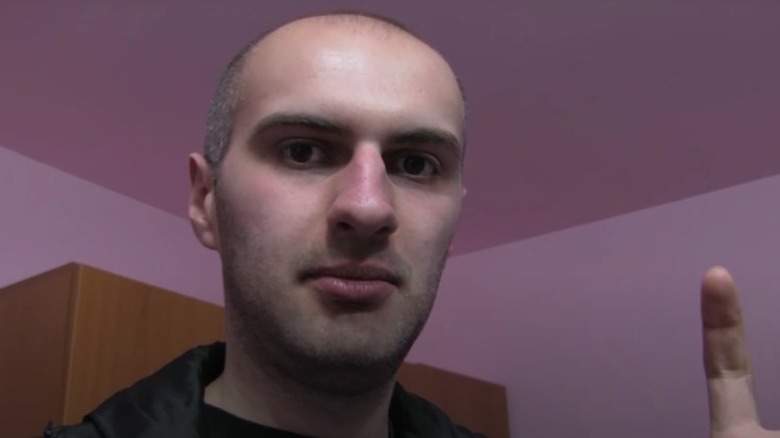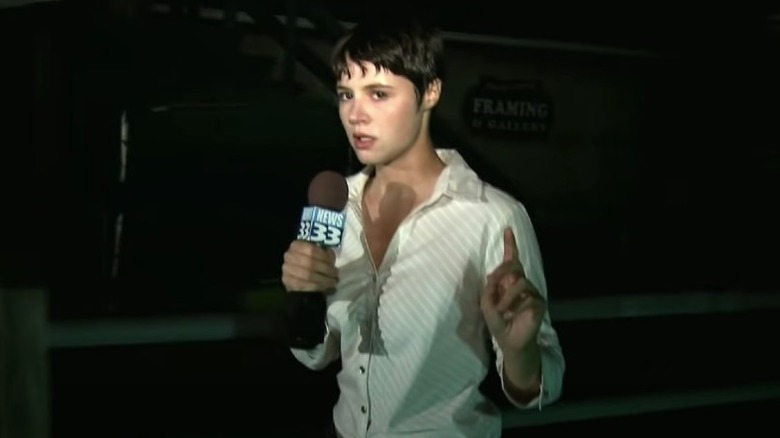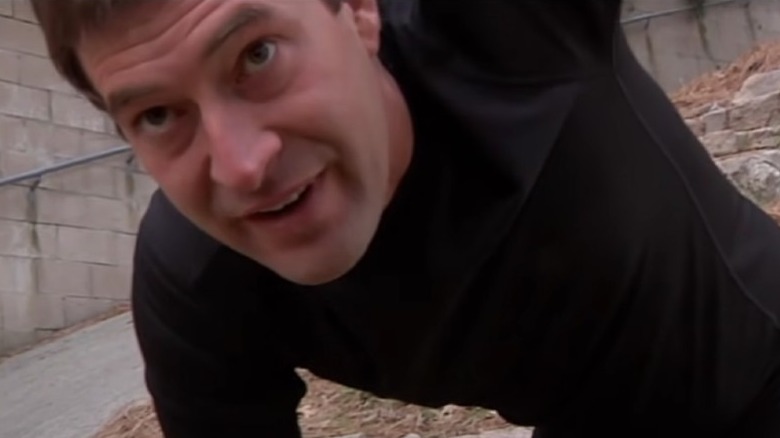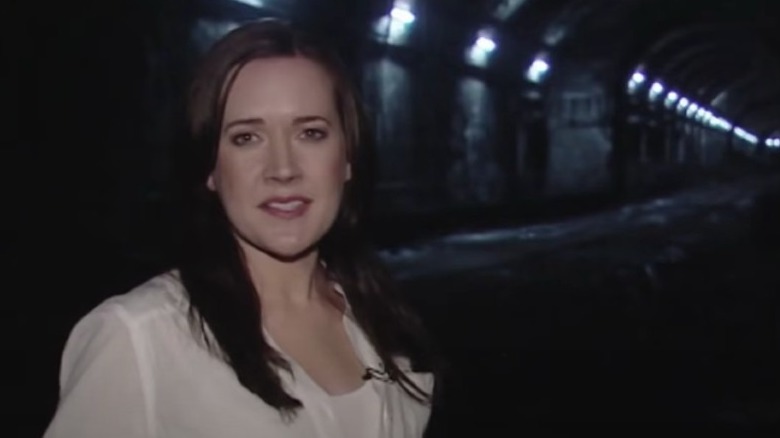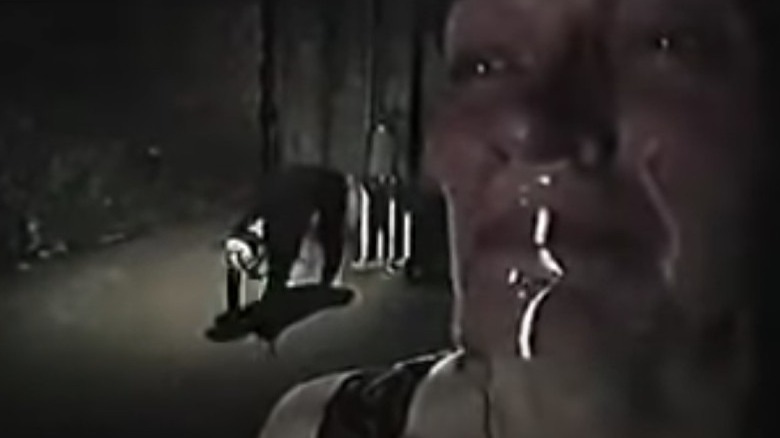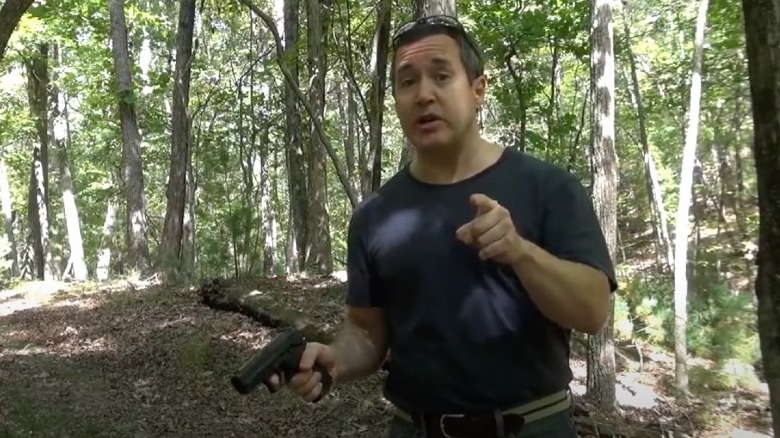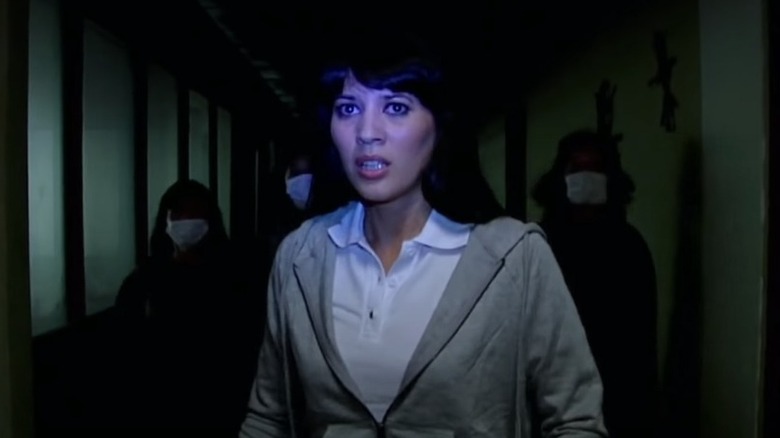The 25 Scariest Found Footage Horror Movies
Often maligned as a lesser horror subgenre, found footage movies can, at their best, reflect the technical omniscience of handheld surveillance while preserving the intimate, raw-nerve terror of whichever (usually ill-fated) character is holding the camera. Permitting audiences a front-row seat to whatever horrors befall their protagonists, found-footage offers no guarantee of anyone's survival save the camera's.
It's no wonder that the subgenre exploded after 9/11 became the first viral terror attack, its events playing out across thousands of disconnected phone screens, the totality of which traumatized a nation. With its images of video feeds, pixelated shadows, and petrified faces thrust into view, found footage emulates the personalized, handheld sensations of smartphone-era self-documentation and exploited the anxieties of the era with visceral, emotional intensity.
In a found footage movie, horrors are inescapable and unknowable. They lurk out of sight, then surge forward, overwhelming both the spectator and their lens. Here are 12 films that cement found-footage as a uniquely modern, nerve-shattering horror format.
The Blair Witch Project (1999)
A found-footage film that needs no introduction, Daniel Myrick and Eduardo Sánchez's "The Blair Witch Project” claims to tell the story of three student filmmakers who disappeared after trekking into the Black Hills near Burkittsville, Maryland, to film a documentary about a local legend. One of the most successful independent films ever given its no-budget origins, "The Blair Witch Project" holds up as a terrifying paragon of found-footage horror (as well as the movie responsible for popularizing the format).
Much of the film's success can be traced back to the highly convincing nature of its cinema-verité presentation: Heather (Heather Donahue), the crew's director, wields a color camcorder, while cinematographer Josh (Joshua Leonard) operates a 16mm, black-and-white camera, and Mike (Michael Williams) does the sound. Together, this trio's footage makes up everything audiences see, from unsettling stick figures hanging in the trees to ominous sounds that ring out as they become hopelessly lost in the forest.
But what makes the film so effective, even more than its many imitators, is its insidious manner of weaponizing the audience's imagination, leaving the exact nature of the terrors befalling its characters ambiguous so that the audience fills in the blanks itself. "I'm scared to close my eyes, I'm scared to open them!" says Heather at one point, pinpointing the spine-chillingly effective power of this all-time horror classic.
Paranormal Activity (2007)
A watershed moment for the found-footage format, Oren Peli's "Paranormal Activity" first struck the festival circuit like a bolt from the blue, sparking audience walkouts; many felt too frightened to keep watching. Its theatrical release proved such a sizable success that the film (shot for just $150,000) is generally considered the most profitable movie ever made, and five sequels of varying quality followed.
But few horror films since have matched the full-force tension of the first "Paranormal Activity," in which couple Micah (Micah Sloat) and Katie (Katie Featherston) set up a camera to surveil the otherworldly presence haunting them at home. The genius of Peli's stationary camera placements is how this approach implores the audience to search every inch of the frame for terrors that are hidden in plain sight. Mounted on tripods around the house, these static cameras contribute to a near-constant sense of dread, locking the audience in for whatever frights a given night might have in store.
Though the entity that's attached itself to Katie starts out small, "Paranormal Activity" builds in intensity until it reaches a conclusion that ranks among the scariest in cinematic history. It involves Katie, either sleepwalking or possessed, standing next to the bed, staring at a slumbering Micah; two hours pass on fast-forward as she sways, motionless, and we watch, helpless.
Grave Encounters (2011)
Gleefully sending up the "ghost hunters" reality TV craze of the early '00s while delivering surprisingly high-voltage jump scares of its own, "Grave Encounters" is one of the lesser-known found-footage films on this list, but earns its place through sheer commitment to its kooky-creepy bit.
Credit Colin Minihan and Stuart Ortiz, together known as filmmaking duo the Vicious Brothers, with wringing genuine suspense out of their somewhat jokey premise: a production crew that voluntarily locks themselves inside an abandoned mental hospital in hopes of documenting some spooky and unexplained phenomena. Suffice to say, they get what they came for. Spectral forces torment the crew subtly at first, then less so. One character goes missing in the night. Inexplicably, the daybreak so eagerly awaited by the characters never comes, as the crew is drawn deeper into an impossible maze of shadowy hallways and unmarked tunnels.
What becomes clear through these distortions of time and space is that the characters have stumbled across a spirit realm, one that does not tolerate the kinds of silly provocations a reality show requires. "Grave Encounters" wasn't particularly well-received upon its release, but horror fans have reassessed the film positively in recent years, particularly praising the film's tongue-in-cheek critique of reality-TV hucksters whose ultimate fates will feel like just desserts to plenty of horror aficionados.
[REC] (2007)
"The Blair Witch Project” spawned countless imitators, many of which mistook that film's shaky-cam style and abrupt ending as strengths that could be easily replicated through mimicry, rather than techniques employed by talented filmmakers with a singular vision. The breathlessly clever, relentlessly terrifying Spanish production "[REC]," released in 2007, is too sophisticated a film to fall into such traps. Instead, Jaume Balagueró and Paco Plaza's contribution to found-footage takes a claustrophobic, conceptually terrifying premise, then forces audiences to ride it out with the characters.
After a TV news crew pushes its way into a Barcelona apartment complex, the block is sealed off as part of a quarantine procedure. Trapped inside, the crew faces a zombie outbreak that tears like wildfire through an assortment of firemen, police officers, and apartment residents. "[REC]" particularly relishes withholding its scares, ensuring that viewers are as on edge about what they're not seeing (and what they might be about to).
The ending of "[REC]" perfectly illustrates the visceral dramatic power of the found footage format, as an escape through the basement plunges the characters into pitch-black darkness. Night-vision is utilized to tremendous effect, and an onslaught of infected assailants overwhelms the lens. As the sound is reduced to panicked whimpers and disembodied snarls, then cuts out entirely, "[REC]" strips the audience of its senses, forcing them to share the characters' inability to see what's coming.
Cannibal Holocaust (1980)
1980's "Cannibal Holocaust" is one of the most controversial films ever made, but its early use of found footage laid the groundwork for every other film on this list. Supposedly consisting of real, unedited footage shot by a documentary film crew that went missing in the Amazon while on a mission to film indigenous cannibal tribes, Italian provocateur Ruggero Deodato's film still revolts audiences today. With its relentless barrage of murders and sexual assaults (both of which were staged) and animal killings (which were not), the film is forthright about presenting its characters' so-called "exploration" as gruesome, barbaric exploitation.
As a critique of tabloid journalism and sensationalized TV news reporting, "Cannibal Holocaust" can be read as one long, sick joke. But Deodato's impressive filmmaking — the almost dreamlike eeriness of the film's descent into a familiar heart of darkness, the deliberately degraded, scratchy video that emulates what one might expect from recovered footage — makes "Cannibal Holocaust" as tough to ignore as it is stomach.
No other film on this list can claim to have landed its filmmaker in a courtroom, but that was the ordeal endured by Deodato, who premiered the film in Milan and was arrested shortly thereafter on obscenity and murder charges (he was convicted of the former, but getting the actors he'd ostensibly murdered to confirm they'd survived was enough to beat the latter).
Lake Mungo (2008)
An Australian import distinguished by its unusually painful, precise exploration of familial grief, 2008's "Lake Mungo" is framed as a documentary about a family reeling from the accidental drowning of their teenage daughter, Alice (Talia Zucker). A modest success upon its original release, writer-director Joel Anderson's psychological horror-drama is experiencing a critical reappraisal as more audiences discover what stands as one of the most indelibly haunting ghost stories to utilize the found-footage format.
As Alice's secret life reveals itself to her grief-stricken parents, they begin seeing what they believe to be her spirit in family photographs and home videos, and summon a local psychic to make sense of these inexplicable yet reassuring sights. As "Lake Mungo" unravels the mysteries of Alice's young and tragic life, the film becomes more solemn and slower-burning than others on this list, but the subtlety of its scares — often lurking in the background of otherwise placid scenes, waiting to chill an observant viewer's blood — suits the mournful qualities of the overarching narrative.
The actors' performances, too, are roundly terrific, capturing the existential confusion and anguish of a family coping with an unfathomable loss. And there's something to be said for the film's deliberate, unshowy build, which pays off with one of the saddest, scariest, most psychologically devastating jump-scares ever filmed. You'll know it when you see it, and you'll feel it for weeks after watching.
The Taking of Deborah Logan (2014)
Adam Robitel has since emerged as a steady hand in the Hollywood horror world, handling the fourth "Insidious" movie and architecting the budding "Escape Room" franchise. But his best film to date remains 2014's "The Taking of Deborah Logan," an unusually thought-provoking found-footage horror film about the ravages of Alzheimer's — one that doubles as a cruelly effective supernatural freak out.
When an elderly woman (Jill Larson) agrees to let a film crew document her deteriorating state of mind, none of them are prepared for what follows. Atmospheric, well-paced, and genuinely unsettling, "The Taking of Deborah Logan" is unusually sophisticated in how its format shifts with the story, becoming more frantic as the crew changes the focus of their film from a medical documentary to a chronicle of the unexplained incidents surrounding their subject. By the time that the film crew tracks Deborah to a menacing mineshaft where young girls were murdered in a cannibalistic ritual many years earlier, "The Taking of Deborah Logan" has relinquished all pretenses of journalistic remove, making for one of the more forcefully nerve-shredding found-footage finales in recent years.
Though Robitel eventually offers up supernatural possession as a genre-appropriate explanation for the forces assailing its main character, the film's sensitive and delicate treatment of an older woman losing her mind actually deepens the impact and intensity of its best scares.
Host (2020)
At the beginning of the pandemic, filmmaker Rob Savage decided to make a horror film that reflected the forced isolation and virtual connectivity of the COVID-19 era. Partnering with writers Gemma Hurley and Jed Shepherd, Savage enlisted a crew of actors who worked remotely to shoot scenes for "Host," a horror movie about friends who decide to perform a seance over Zoom and inadvertently invite supernatural activity into their homes.
Lean, mean, and brutally effective, this 56-minute frightfest wastes little time before subjecting its extraordinarily expressive (and believably terrified) cast to a rapidly escalating series of demonic intrusions. What makes "Host" such an unusually clever and exciting found-footage film — not to mention a valuable encapsulation of this hyper-anxious cultural moment — is the imagination with which Savage exploits the specific anxieties of lives spent simultaneously online and alone. For all the time we commit to speaking with friends over an internet connection, none of them can intervene or do more than watch what's happening on our screens, however horrifying that is.
When one character starts typing in the chat, and their messages come across as a garbled mash, the possible explanations for this barrage are almost as scary as the reveal. "Host" is framed as a recording of a Zoom call from Hell, and Savage's ability to follow through on the setup's promise makes for a film more clever than anyone could've expected.
Hell House LLC (2015)
Executed with a level of intelligence and conviction that's rare in horror filmmaking writ large, let alone found footage, Stephen Cognetti's 2015 gem "Hell House LLC" follows a documentary crew's efforts to uncover the truth about an unexplained malfunction that led to the deaths of 15 tour-goers and staff on the opening night of a Halloween haunted house tour. Interviewing the only surviving staff member, the crew is entrusted with never-before-seen footage shot by Hell House employees.
As such, Cognetti's film leaps backward in time, depicting the lead-up to the night of the tragedy as Hell House team members sort through cobwebs and creepy clown dolls to set up their attraction inside the abandoned Abbadon Hotel. As opening night approaches, "Hell House LLC" ratchets up the tension, offering one particularly novel twist on found-footage conventions: Smart-alecky team members take us behind the scenes of the scares they're staging, only to notice props that have inexplicably moved out of place.
This game of who's-spooking-who builds to a series of blood-curdling reveals in the film's third act, as the Hell House itself becomes a more active participant in the terror. What if a house wasn't just haunted, but somehow predatory, lying in wait for victims and sending out its own emissaries to lure in fresh quarry? "Hell House LLC" is so fiendishly well-executed that it fully sells this freaky premise; repeat watches reveal extra scares functioning on an almost subliminal level.
Cloverfield (2008)
One of the most high-profile found footage films in recent years, "Cloverfield" follows five New York residents forced to flee as a massive, unexplained creature rises out of the ocean and lays waste to the city. As the protagonists move through crumbling skyscrapers and decimated New York landmarks, shaky-cam techniques immerse the viewers in their frantic, sustained efforts to escape all this inner-city carnage.
But director Matt Reeves, working in tandem with producer J.J. Abrams, keeps the "Cloverfield" monster off screen for hefty portions of the film, lingering on shots of bloodied civilians stumbling out of the rubble and achieving the film's most heart-in-mouth terrifying sequence when the characters climb one skyscraper to rescue their friend from another that's collapsed against it.
Though the central monster — and the tentacled offspring it sends scuttling and springing through subways — is a terrifying sight, "Cloverfield" more boldly evokes images of the aftermath of the 9/11 attacks, many of which were taken by horrified bystanders and none of which could employ a lens wide enough to capture the extent of the destruction. "Cloverfield" similarly draws its horror from the dread and disorientation of those at ground zero, offering a kind of overdue catharsis that allows audiences to process the sudden, senseless violence of inner-city destruction while containing it within a genre-movie framework — and presenting a towering monster onto which such fears can be easily, safely projected.
Gonjiam: Haunted Asylum (2018)
South Korean filmmaker Jeong Beom-shik is the force behind this little-seen but extremely hair-raising 2018 rollercoaster, which centers on a crew of volunteer YouTubers — overseen remotely by team leader Ha-Joon (Wi Ha-Joon) — who break into the notoriously haunted asylum of the title, hoping to score enough freaky footage to drive up view-counts for their horror web series.
What helps to set "Gonjiam: Haunted Asylum" apart from other, similar films is the slickness of its presentation. The characters utilize modern technology to shoot their videos, and all of them are professionally trained, allowing for smooth, graceful camera movements that make sense within the story. Jeong also ladles on the ominous, shadow-soaked atmosphere, establishing an uncommonly deep, dark labyrinth of abandoned corridors through which to guide his intrepid, increasingly fearful characters.
Amusingly, as the protagonists encounter both real supernatural forces and staged pranks that Ha-Joon has orchestrated, "Gonjiam: Haunted Asylum" heightens its realism by switching between point-of-view shots and first-person close-ups that mirror the feel of a video upload. Innovative techniques such as these ultimately elevate the film's scares, creating about as authentically harrowing a "live-streamed" horror as you're likely to find.
Noroi: The Curse (2005)
Found footage films don't often aim as high as this 2005 J-horror offering from director Kōji Shiraishi about the efforts of paranormal researcher Masafumi Kobayashi (Jin Muraki) to make a documentary about a series of uncanny, seemingly unconnected events. Positioned as footage recorded by Kobayashi's cameraman and released as a cohesive documentary — complete with news broadcasts, interviews, and 16mm film footage depicting a rare ritual — in the wake of his unsolved disappearance, "Noroi: The Curse" is impressively ambitious and cumulatively terrifying.
As Kobayashi's research brings him into contact with a psychically gifted child (Rio Kanno), a tin-foil hat-wearing madman (Satoru Jitsunashi) who speaks of "ectoplasmic worms," and a woman who can't shake the sound of babies wailing inside her home, director Shiraishi takes the time to gradually weave plot threads together, allowing for plenty of eerie, shiver-inducing moments along the way. As Kobayashi follows the trail of an ancient demon named Kagutaba, "Noroi: The Curse" escalates in every conceivable way, becoming more dramatically compelling and conspicuously well-crafted even as its scares go from merely unsettling to full-on nightmare fuel.
The McPherson Tape (1989)
A decade before "The Blair Witch Project," Dean Alioto's 1989 film, "The McPherson Tape," helped introduce the found footage genre. The low-budget chiller cemented what a first-person perspective, found footage film could (and should) be. On a limited budget, Alioto creates a moody atmosphere, relatable characters, and a slow, suspenseful build-up. It seems so real that even "Unsolved Mysteries" covered it.
"The McPherson Tape" clocks in at just over an hour and follows the story of the Van Heeses, a family that comes into contact with extraterrestrial beings. They gather to celebrate youngest daughter Michelle's (Laura Tomas) fifth birthday when a UFO lands near their home. Older sibling Michael (played by Alioto) carries around his hand-held video camera to capture both the festivities and the eventual alien abduction.
After the power goes out, the family checks the breaker, but their attempts to restore the electricity fail. At that moment, an object with flashing lights descends over their heads and lands in the woods. Against their better judgment, they hike down to the landing site and immediately discover a group of alien creatures stepping out of a large, dark mass. The Van Heeses stumble back into the house and hunker down. Soon enough, they learn that nothing can keep the outer space beings from invading.
Willow Creek (2013)
You'll never go camping again after viewing "Willow Creek." Writer-director Bobcat Goldthwait relies heavily on the power of suggestion, and it works like a charm. In doing so, he casts the Bigfoot legend back into mysterious and spooky territory. It's pure nightmare fuel.
A firm believer in the hairy woodlands creature, Jim (Bryce Johnson) convinces his girlfriend, Kelly (Alexie Gilmore), to accompany him on an excursion to Willow Creek, California, the self-proclaimed Bigfoot capital of the world. After interviewing several residents, the two head off into Six Rivers National Forest with the hope of capturing the mythic creature on camera. Things start fairly innocuously at first. Their camp gets trashed, but they shrug it off as the actions of hungry bears.
Once night falls, unseen creatures emerge from the woods and circle Jim and Kelly's tent. Ungodly noises fill the night air. They even hear a woman blubbering in the distance. A Bigfoot clan sniffs and inspects the area, eventually wandering off when the sun crests the horizon. In the morning, Jim and Kelly decide to leave, first discovering clumps of frizzy gray hair outside their tent before attempting to find their way back to their car. Lost, they walk in circles. The woods seem much bigger than when they entered. "Willow Creek" lures you in with the cozy warmth of nature but presents a darkness that is just as terrifying as Bigfoot itself.
Incantation (2022)
Just when you thought found footage has run its course, "Incantation" completely reinvigorates the format. Director Kevin Ko, who co-wrote the script with Chang Che-wei, plays with timelines, switching between the present and the past to bring even more intrigue to the story. The film's central question is simple: What could possibly be inside that tunnel? The answer is far more horrifying than you can imagine.
A woman named Li Ronan (Tsai Hsuan-yen) introduces a series of visual puzzles. It's all a trick of the mind. The power we all carry inside ourselves (how perception can alter what you see) is something Ronan and her boyfriend Dom, (Sean Lin), realize six years before. When she "violated a terrible taboo," Ronan unwittingly invited a shadowy presence into her life. In part, the group also enters the eye of a ritual in which none of them are willing to participate.
"Incantation" reimagines found footage conventions in smart, inventive ways. He draws you in with a compelling premise and uses time, unnerving camera work, and Hsuan-yen's strong lead performance to hammer the shocking imagery into the brain. It's enough to make you want to leave all the lights on at night.
The Den (2013)
The advent of laptops and smartphones gave life to a sub-genre of found footage called "screenlife" in the 2010s. In 2013's "The Den," director Zachary Donohue exploits the desperation to connect with others online and growing internet hoaxes in ways that feel incredibly personal.
Sociology student Liz (Melanie Papalia) pitches the graduate board her final project, which is based on a video chat service called The Den. On the site, users can connect with others from anywhere in the world. Liz believes it could be a huge game changer in the way we communicate online. As part of her work, she promises to document every single conversation and indicate which ones resulted in authentic connections. The board is skeptical, but her mentor and friend, Sally (Saidah Arrika Ekulona), convinces her colleagues otherwise.
Liz is awarded a grant and dives into research. Soon afterward, Liz chats with a user whose webcam is broken. The conversation is immediately strange, but it seems innocent enough. What Liz doesn't know is that the person on the other end of the screen has hacked her computer and her cell phone. Slowly but surely, the unknown hacker chips away at her life, deleting important emails and phone calls. "The Den" distills our collective fear that we're all being watched. Experts still suggest that you should cover your computer camera. It's not so outrageous or paranoid to think something bad could happen to you if you don't. Liz learns that the hard way.
Be My Cat: A Film for Anne (2015)
Obsessive fandom and the dangers of boundary-pushing art collide in writer-director Adrian Țofei's "Be My Cat: A Film for Anne." In this 2015 Romanian film, Țofei stars as the eccentric goofball Adrian, an aspiring filmmaker who's desperately seeking the attention of famed actor Anne Hathaway. In filming his creative process, he hopes to convince Hathaway to star in his movie and "win another Oscar." Țofei grounds his story in such a way that makes for a disturbingly experience — as though we shouldn't be watching in the first place.
Hathaway's performance as Catwoman in "Dark Knight Rises" givesȚofei the idea to tailor a role for her in his upcoming feature. Adrian rents out an abandoned house down the street from his home, where he lives with his mother, as the prime location to film various scenes as demos to send to Hathaway. He puts out casting calls and lures unsuspecting young women into his sick fantasies. Adrian goes to extreme lengths to prove he's serious about his art, from dressing up in a catsuit to abducting a woman using chloroform.
"Be My Cat: A Film for Anne" is the found footage version of "Henry: Portrait of a Serial Killer." It's insidiously terrifying, soaking slowly into the skin and polluting the mind. Țofei is magnetic on screen. Even as Adrian's world grows darker and more unhinged, you can't avert your eyes.
The Bay (2012)
Director Barry Levinson fuses eco-horror and found footage into a terrifying environmental disaster film. Based on a short Levinson co-wrote with Michael Wallach, "The Bay" centers on residents in Claridge, Maryland, a fictional coastal town on the Chesapeake Bay. The area is a tourist draw and the home of a large chicken farm. However, some citizens are concerned about the dumping of chemicals and chicken excrement into the bay.
Naturally, Mayor Stockman (Frank Deal) brushes off the claims that the water is contaminated and forges ahead with the big Fourth of July celebration. Reporter Donna Thompson (Kether Donohue) catches wind of the rumors and decides to cover the town's holiday festivities. What begins as a carefree, joyful event quickly goes sideways when residents break out with oozing lesions and several contestants in the crab-eating contest vomit violently all over the boardwalk.
"The Bay" follows news reports and cell phone footage and camera feeds from numerous characters. It's utter chaos. Considering the COVID-19 pandemic is still ongoing, we are not far off from a mass extinction event as depicted in this film. Researchers may claim more studies need to be conducted regarding the end of life as we know it, but there's truth to the matter. This frightening 2012 film may just be exactly how it all goes down. You'll never drink water without thinking about this one ever again.
Creep (2014)
Even though its heyday is long behind it, Craigslist is still a thing. The digital community board arguably reached its peak around the time writer-director Patrick Brice released his film, "Creep." Brice, who also stars in the film, manages to outdo every weird Craigslist ad by a wide margin. When Brice's character, Aaron, a working filmmaker, answers an inquiry about filming a video diary, he gets caught in a bizarre plot of pure obsession.
Josef (Mark Duplass) is a unique kind of person. A bit neurotic, he lives in a remote cabin in a town outside of San Bernardino, California, and has an inoperable brain tumor. His wife is pregnant, and he hopes to make a memorial video diary for his unborn child. It's a harmless idea, but when Aaron spends the day with him, Josef lets his facade slowly fade away. From filming Josef in the bathtub to a stroll in the woods, Aaron captures every single moment.
One strange request snowballs into the next until Aaron is trapped beneath an inescapable avalanche. "Creep" creeps under the skin to one of the single most chilling final scenes in any horror movie ever.
The Tunnel (2011)
Carlo Ledesma truly impresses with his directorial debut, "The Tunnel." What makes the movie a genre gem is the way it reshapes tropes and conventions. "The Tunnel" wastes very little time getting to the nitty gritty. Bel Deliá plays Natasha Warner, a reporter aiming to expose a government coverup regarding an underground reservoir and homeless people hiding in tunnels.
Much to the crew's dismay, Natasha first claims she is authorized to enter the network of hidden passageways and then, sneaks her way past security. It's a set-up we've seen time and time again, yet events immediately escalate when darkness sets in. Natasha, producer Peter (Andy Rodoreda), audio engineer Tangles (Luke Arnold), and cameraman Steven (Steve Davis), descend into madness they never thought existed.
"The Tunnel" is crucially underseen and underappreciated as one of the genre's best examples of subverting expectations to deliver an endless round of sucker punches. The dread of what may be circling the group in the shadows is so suffocating, that it'll knock you out.
The Poughkeepsie Tapes (2007)
"The Poughkeepsie Tapes" was a cursed film from the start. Originally slated for an early 2008 theatrical debut, MGM yanked it from its release schedule. The film, written and directed by John Erick Dowdle, briefly popped up on digital in 2014. It was finally given a proper DVD and Blu-ray release in 2017 by Scream Factory. Ten very long years only added to the mystery around the project.
Presented as a pseudo-documentary, "The Poughkeepsie Tapes" details the crimes of serial killer Edward Carver (Ben Messmer). Police raid a home in Poughkeepsie and uncover hundreds of videotapes of his many murders. One of those tapes tells the story of a young woman named Cheryl Dempsey (Stacy Chbosky) and how she was violently tortured for days on end.
Police scan through several other videos, and there is not a single tape that doesn't stun and terrify. Dowdle's work burrows deep into the soul in a way that is nothing short of petrifying. "The Poughkeepsie Tapes" looks and feels like a snuff film that no one in their right mind should be seeing.
Leaving D.C. (2012)
"Leaving D.C." relies solely on one performance to sell the mayhem. Writer, director, and star Josh Criss turns up the heat on found footage with a hyper-focus on sound as the driving force behind the unexplainable. Criss plays the socially awkward Mark Klein, who has spent most of his adult life living in Washington, DC. The city has taken a toll, and he decides to move to a remote home in West Virginia to recharge.
Things immediately seem off. Mark first discovers a cat skull attached to a tree in a nearby clearing, and if that weren't creepy enough, a strange banging begins to happen in the middle of the night. He sets up a tape recorder to document sounds during the wee hours of the morning and discovers someone — or something — lurking in the woods and taunting him. The unknown being also enjoys some tranquil music, often playing a flute around the same hour almost every single night.
It becomes too much for him, and Mark slowly devolves into a state of delirium. The terror of "Leaving D.C." lies in not only the unwelcome presence but Mark's descent into fantasy. The ending notwithstanding, the film delivers on the scares and lives somewhere between "The Blair Witch Project" and "Bad Ben."
V/H/S 2 (2013)
The second installment in the "V/H/S" franchise is the perfect stimulant for nightmares. An anthology, "V/H/S/2" spans several genres, and each segment is directed by today's most compelling genre filmmakers.
The wraparound story, "Tape 49," directed by Simon Barrett, follows two private investigators tasked with tracking down a missing person. Upon entering the subject's residence, they discover a collection of unmarked VHS tapes. Each tape tells a horrifying story. The first is called "Phase 1 Clinical Trials," directed by Adam Wingard, and depicts a story of a young man with a camera implanted where his right eye once was. In the second story, "A Ride in the Park," directors Eduardo Sánchez and Gregg Hale explore what it would be like if a person equipped with a helmet camera died during a zombie apocalypse, turned, and their corpse filmed flesh-eating attacks.
The fourth story, "Safe Haven," directed by Timo Tjahjanto and Gareth Evans, is one of the most grisly, nauseating, and chilling segments in all of the found footage genre. A film crew enters a cult community, interviews the leader, and documents various classrooms packed with children. Once the "time of reckoning" is broadcast over the intercom, it's a free fall into sadistic destruction. In the final story, "Slumber Party Alien Abduction," director Jason Eisener invites the viewer into a strange sci-fi tale. All in all, "V/H/S/2" has something for every kind of horror fan.
The Medium (2021)
In "The Medium," director Banjong Pisanthanakun takes the script (co-written by Chantavit Dhanasevi and Na Hong-jin) and submerges the viewer in the rituals and misfortunes plaguing a small town in northern Thailand. A documentary team travels to the isolated location to tell the story of a shaman named Nim (Sawanee Utoomma) and chronicle the family legacy of spirit mediums and tragedies afflicting the men.
Nim's sister, Noi (Sirani Yankittikan), was originally expected to invite ancestral god Bayan into herself, but she refused. Instead, she turned to Christianity. Noi's only daughter, Ming (Narilya Gulmongkolpech), follows in her mother's footsteps, a decision that soon results in a bizarre possession. Ming begins exhibiting aggressive behavior and multiple personalities, indicating that Bayan has sinister plans for the young girl.
As you might expect, things only get worse for the family. "The Medium" is far more terrifying than most found footage films. Darkness practically oozes from the screen.
As Above, So Below (2014)
"As Above, So Below" might be the most criminally maligned entry on this list. John Erick Dowdle, the mind behind "The Poughkeepsie Tapes," proves he can deliver another horrifying found footage film. Instead of a pseudo=documentary structure, the 2014 film features a more straightforward presentation. Perdita Weeks portrays archeology student Scarlett Marlowe, who takes up her late father's work of tracking down the Philosopher's Stone.
Her investigation takes her to Paris, where she enlists ex-lover George (Ben Feldman) and cameraman Benji (Edwin Hodge) to accompany her beneath the city into the Paris Catacombs. After attempting to trespass into the tunnels during a guided tour, Scarlett hires a mysterious gentleman named Papillon (François Civil) as well as Papillon's girlfriend, Souxie (Marion Lambert), and friend, Zed (Ali Marhyar). They devise a plan and slink down into the darkness.
Dowdle makes the viewing experience claustrophobic on a level on par with "The Descent." As events swiftly go sideways for the group, "As Above, So Below" crushes down on the audience's shoulders. You may even find yourself short of breath.
